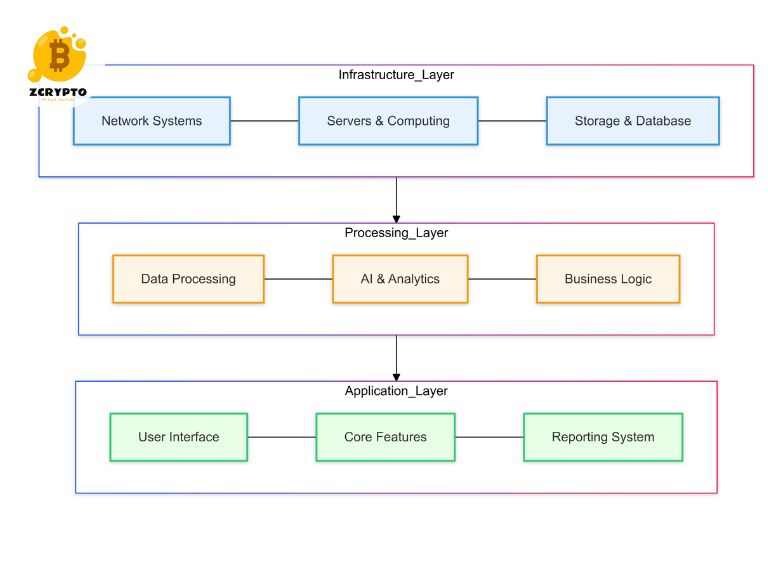Definition and Scope of the Buy-Side
The buy-side is a segment of financial markets made up of institutions that buy securities with the primary goal of managing money. These institutions are not involved in selling securities but rather in acquiring them to generate returns for their clients or beneficiaries. Key entities involved in the buy-side include:
- What is Multisig? A Technical Analysis of Multi-Signature Security
- Maximize Retirement Savings: The Ultimate Guide to 412(i) Plans for Small Business Owners
- How to Calculate Average Return: A Comprehensive Guide for Investors and Business Analysts
- Understanding Beneficiaries: A Comprehensive Guide to Inheritance and Financial Planning
- What is NFC? A Technical Guide to Near Field Communication Technology
-
Hedge Funds: These are investment vehicles that use various strategies to generate absolute returns, often employing leverage and derivatives.
You are viewing: Unlocking the Buy-Side: A Comprehensive Guide to Investment Strategies and Market Power
-
Pension Funds: These funds manage retirement savings for employees and aim to provide stable long-term returns.
-
Mutual Funds: Open-ended investment companies that pool money from many investors to purchase a diversified portfolio of stocks, bonds, or other securities.
-
Trusts: Legal entities that hold assets on behalf of beneficiaries.
-
Equity Funds: Focus on investing in stocks to achieve capital appreciation.
-
High-Net-Worth Individuals: Wealthy individuals who invest their personal wealth in various asset classes.
Understanding these entities is essential because they collectively represent a significant portion of the market’s buying power.
Investment Strategies Employed by the Buy-Side
Active Investment Strategies
Active investment strategies are designed to outperform benchmark indices. Here are some key approaches:
-
Value Investing: This strategy involves buying undervalued stocks with the expectation that their price will rise over time. Investors look for companies with strong fundamentals but low market prices.
-
Growth Investing: Focuses on companies that are expected to grow at an above-average rate compared to other companies. These investors seek out firms with high growth potential.
-
Momentum Investing: Involves buying stocks that have shown high returns over the past few months or years, with the expectation that this trend will continue.
These strategies require extensive research and analysis to identify opportunities that can beat the market.
Passive Investment Strategies
Passive investment strategies, on the other hand, aim to replicate the performance of an index rather than trying to outperform it. Key tools include:
-
See more : What is Music NFT? Transforming Artist-Fan Relationships
Index Funds: These funds track a specific market index, such as the S&P 500, by holding all or a representative sample of the securities in that index.
-
Exchange-Traded Funds (ETFs): Similar to index funds but trade on an exchange like stocks, offering flexibility and diversification.
Passive strategies are often less expensive and require minimal intervention, making them attractive for long-term investors.
Roles and Responsibilities of Buy-Side Analysts
Buy-side analysts play a critical role in the investment process. Their duties include:
-
Extensive Research: Conducting thorough analyses of companies, industries, and market trends to identify potential investment opportunities.
-
Financial Modeling: Building financial models to forecast future earnings and cash flows of potential investments.
-
Risk Assessment: Evaluating the risks associated with different investments and recommending strategies to mitigate them.
-
Collaboration with Portfolio Managers: Working closely with portfolio managers to implement investment decisions and monitor portfolio performance.
Their work is instrumental in helping institutions make informed investment choices.
Tools and Resources Used by the Buy-Side
Buy-side institutions rely on a variety of analytical software and data sources to make informed investment decisions. Some key tools include:
-
Financial Modeling Software: Tools like Excel, Bloomberg, or specialized financial modeling software are used to build detailed financial models.
-
Data Sources: Access to comprehensive databases such as Thomson Reuters, FactSet, or proprietary research reports is crucial for conducting thorough analyses.
-
Valuation Analysis: Techniques such as discounted cash flow (DCF) analysis or relative valuation are used to determine the intrinsic value of securities.
These resources enable analysts to perform rigorous due diligence before making investment recommendations.
Market Power and Influence of the Buy-Side
Large buy-side institutions wield significant market power due to their ability to place large-lot transactions and minimize trading costs. Here’s how they influence the market:
-
See more : Understanding Banker’s Acceptance: A Safe and Liquid Investment for International Trade
Large-Lot Transactions: Their substantial buying power allows them to execute trades without significantly impacting market prices.
-
Market Impact: Their investment decisions can move markets and influence other investors. For example, when a large pension fund decides to invest in a particular sector, it can drive up demand and prices for related stocks.
This influence underscores the importance of understanding how these institutions operate within the broader financial landscape.
Benefits and Advantages of the Buy-Side
Being on the buy-side offers several advantages:
-
Access to Internal Trading Resources: Buy-side firms often have extensive internal resources that facilitate better trading execution and lower costs.
-
Direct Influence on Investment Strategies: Analysts and portfolio managers have direct input into investment decisions, allowing for more tailored strategies.
-
Higher Remuneration: Careers on the buy-side are often more lucrative compared to roles on the sell-side.
-
Better Work-Life Balance: The nature of buy-side work can offer more predictable hours and less stress compared to sell-side roles.
These benefits make working on the buy-side an attractive option for many financial professionals.
Example of Buy-Side Operations
Consider John Smith, who starts his own investment management firm. Here’s how he might conduct buy-side activities:
John begins by conducting extensive research on various sectors and companies. He uses financial modeling software to build detailed models of potential investments and assesses risks using valuation analysis techniques. After identifying promising opportunities, he collaborates with his team of analysts and portfolio managers to implement these strategies. Through this process, John leverages his firm’s market power to execute large trades efficiently while minimizing costs.
Regulatory and Disclosure Requirements
Buy-side institutions are subject to various regulatory requirements:
-
Quarterly 13F Filings: In the U.S., institutional investment managers must file Form 13F with the SEC each quarter to disclose their holdings.
-
IOSCO Regulations: The International Organization of Securities Commissions (IOSCO) sets global standards for securities regulation that buy-side firms must adhere to.
Compliance with these regulations is essential for maintaining transparency and trust within the financial system.
Source: https://summacumlaude.site
Category: Blog







